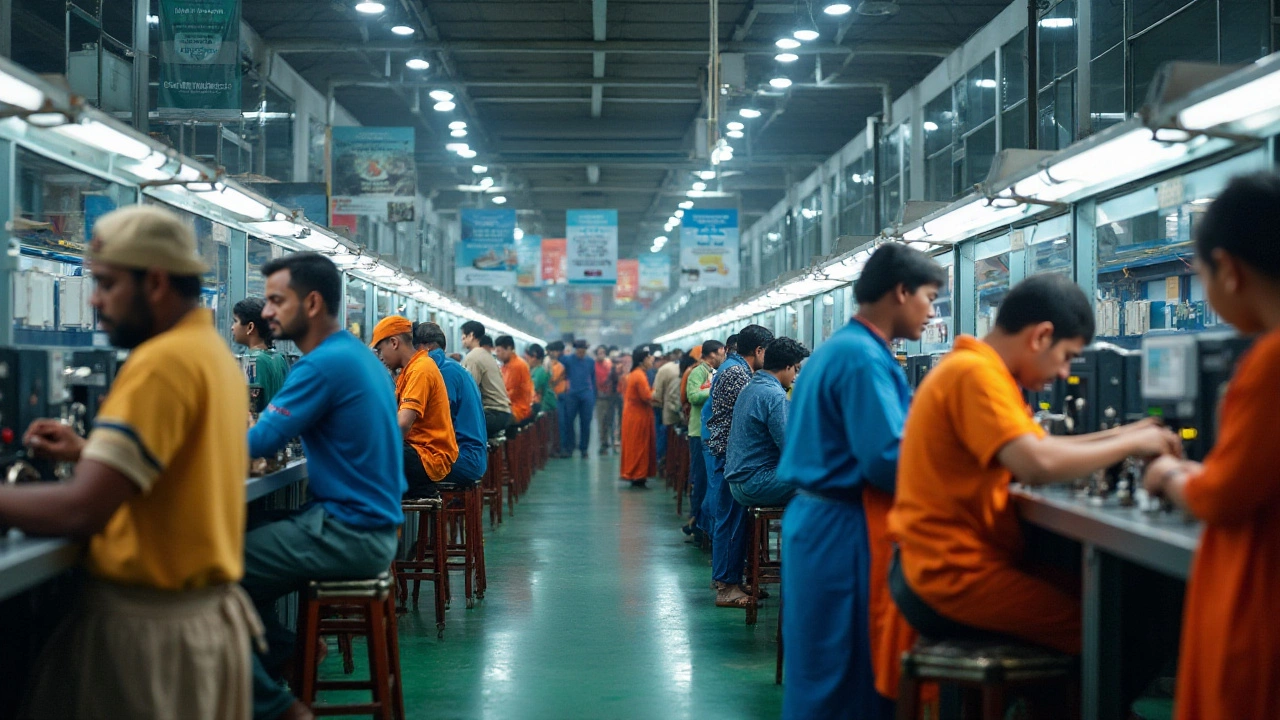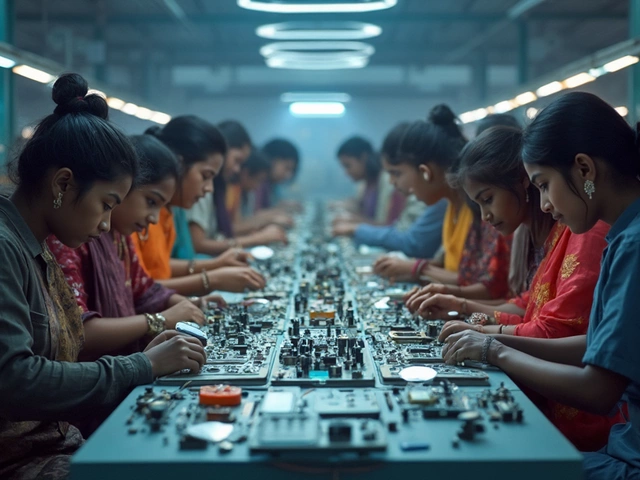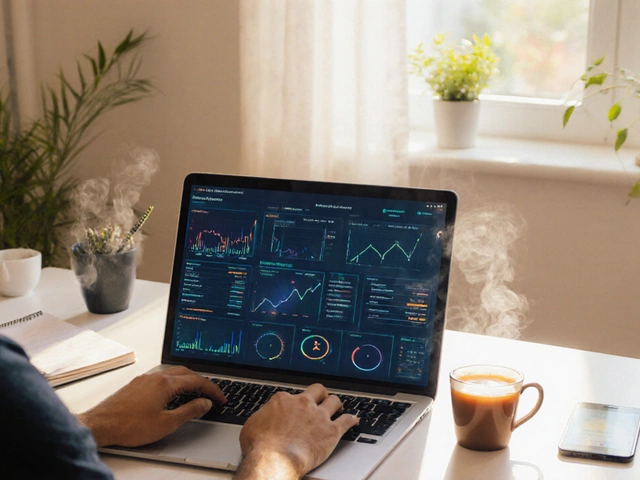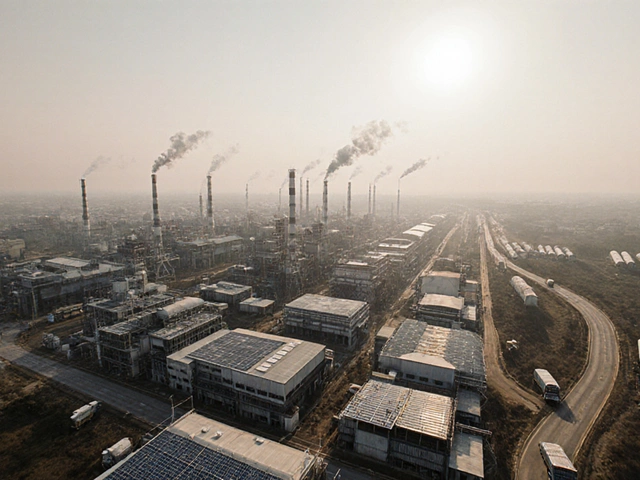Manufacturing is not just about assembling goods; it's a powerhouse driving a country's economy forward. From the bustling automotive plants to the crafting of microchips, manufacturing seeps into every corner of our modern lives. The factories, filled with buzzing machinery and skilled workers, symbolize the confluence of labor, resources, and technology.
The sector provides countless jobs, not only for those on the factory floor but across a broad spectrum of supporting industries. Its significance stirs governments worldwide to craft strategic plans and policies to nurture and expand this key area. As countries compete on a global stage, the strength and innovation of their manufacturing sectors often determine their economic fate.
- Economic Development and Job Creation
- Technological Advancements
- Government Support and Schemes
- Export Growth and Trade Balance
- Challenges and Future Outlook
Economic Development and Job Creation
The manufacturing sector is a key player in the story of economic progress. It serves as both a catalyst for growth and a pillar upon which industrial stability is built. As nations aim to transition from agrarian economies to more sophisticated industrial societies, manufacturing becomes the backbone of this transformation. One of the foremost contributions of manufacturing is the generation of employment opportunities. Factories and production plants employ millions, ranging from skilled technicians to management professionals, thereby providing diverse employment avenues. As jobs are created, income levels rise, which positively affects the overall economic health of a nation.
Manufacturing drives economic development by fostering local industries and supporting small and medium-sized enterprises (SMEs). When artisans and small business owners can integrate their products or services into manufacturing supply chains, a robust local economic ecosystem takes shape. SMEs often benefit from technological and operational advancements driven by larger manufacturing enterprises, enabling them to compete more effectively on a national and global level. The growth in this sector underpins wealth creation, and while urban areas may initially benefit most, rural regions also experience upliftment as supply networks extend their reach.
"The first step to building competence in manufacturing is ensuring consistent investments in technology and workforce training." - Source: World Economic Forum
Investments in the manufacturing sector frequently lead to ripple effects that touch various parts of the economy. Higher manufacturing output means a higher demand for raw materials, transportation, and technology services, which in turn prompts job creation in these related fields. The circulation of funds in the economy boosts consumption, encouraging a cycle of sustained demand and supply.
Beyond direct economic contributions, manufacturing fosters innovation. By cultivating a culture of continuous improvement and adaptation, manufacturing sectors often become incubators for groundbreaking technological advancements. These innovations can spur industries as varied as healthcare, automotive, and consumer electronics, ultimately contributing to the diverse landscape of national growth. Investment in research and development within the manufacturing hub often leads to patents and the commercialization of new technologies, thereby expanding the avenues for economic expansion.
Manufacturing has a notable impact on enhancing productivity within other sectors of the economy. By integrating cutting-edge technologies, manufacturing processes often optimize efficiency, reducing production costs and waste. This increased efficiency not only benefits the manufacturing companies themselves but also trickles down to consumers, who enjoy lower prices and improved products. In doing so, manufacturing plays a pivotal role in increasing the economic competitiveness of a nation, enabling it to compete in the global market.
The significance of manufacturing in job creation and economic development cannot be overstated. Government schemes often prioritize this sector because of its potential to kick-start economies and create resilient industries. These schemes may take various forms, such as tax breaks for manufacturing investments, subsidies for technological upgrades, or vocational training programs aimed at preparing the workforce for future manufacturing demands. Countries that successfully integrate robust manufacturing strategies into their national policies tend to see marked improvements in economic metrics and quality of life for their citizens.
Technological Advancements
The realm of manufacturing is undergoing a transformation, driven by rapid technological advancements that are redefining industry standards. In recent years, we've seen an unprecedented integration of digital technologies into the manufacturing process, creating an environment ripe for innovation and efficiency. Technologies like artificial intelligence, the Internet of Things (IoT), and robotics are not just buzzwords but pivotal forces reshaping the sector. These innovations enable manufacturers to optimize production lines, reduce down-time, and enhance quality control. Many factories now employ smart machinery equipped with sensors capable of predictive maintenance, which significantly cuts costs and elevates productivity.
As industries advance, they also foster the development of new materials and processes, enhancing the capabilities and applications of manufactured products. Consider the evolution of 3D printing—what was once a niche technology now holds promise across numerous fields, from healthcare to aerospace. This capability not only reduces waste but also allows for intricate designs that were previously impossible. Such technologies democratize manufacturing, giving even small enterprises the ability to produce complex items without the need for massive infrastructure. This notion was echoed by a renowned engineer:
“In manufacturing, digital twins and smart factories aren't just futuristic concepts; they are the next industrial revolution at our fingertips.”
Moreover, the economic development catalyzed by these innovations extends well beyond the factory floor. Technologically advanced manufacturing processes support a plethora of related industries, including logistics, supply chain management, and information technology. This dynamic ecosystem creates opportunities for startups and established firms alike, resulting in a ripple effect of economic growth. The real-time data analytics offered by IoT devices not only improve production efficacy but also allow companies to respond swiftly to market demands and consumer preferences. As these digital tools become more accessible, they pave the way for widespread adoption across different sectors, thus broadening the horizon of what manufacturing could achieve.
The challenge remains how to ensure these technological advancements are sustainable and equitable across various regions. Governments play a pivotal role in facilitating this transformation by supporting innovation with investments and favorable policies. Many nations have initiated programs that encourage technology adoption in manufacturing, aiming to uplift national competitiveness on a global scale. These partnerships between public and private sectors result in an educated workforce skilled in using and maintaining the latest technologies, which is crucial for a thriving manufacturing ecosystem.
It's also worth noting the environmental implications of modern manufacturing technologies. As industries aim to meet lofty sustainability goals, incorporation of green technologies becomes essential. With advancements in clean energy solutions like solar and wind power, manufacturing facilities are increasingly powered by renewable sources. These sustainability practices not only reduce carbon footprints but also attract consumers and businesses who prioritize environmental responsibility. Companies that embrace these trends are better positioned to lead in an era where ecological considerations are of paramount significance.
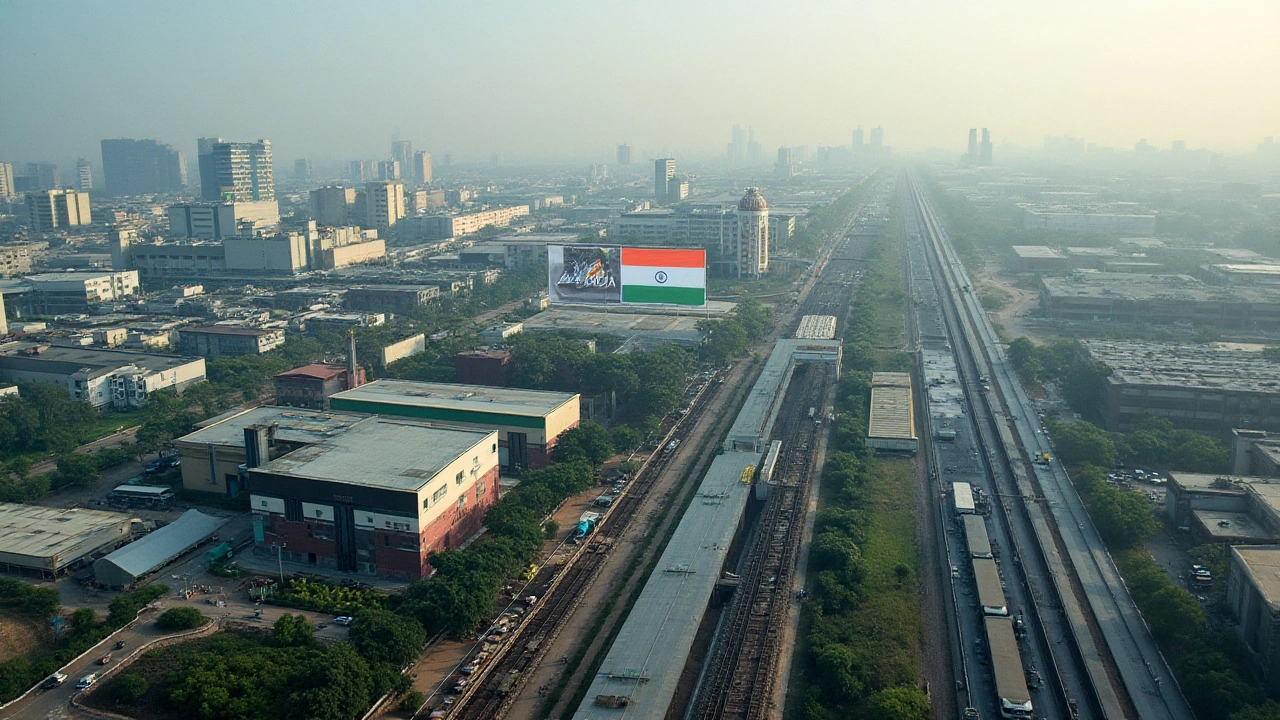
Government Support and Schemes
Many nations have recognized the pivotal role that manufacturing plays in economic development. They have implemented various support mechanisms to enhance the sector's contribution to their economies. Government schemes can encompass a range of strategies, from financial incentives to infrastructure development, all aimed at stimulating manufacturing growth. These plans are often tailored to address specific challenges and opportunities within the manufacturing industry.
One common approach is through financial assistance, where governments offer tax breaks, subsidies, or low-interest loans to manufacturers. This financial support helps to lower production costs, encourage the establishment of new factories, and stimulate innovation. For example, the United States has provided tax credits for research and development (R&D) activities, aiming to encourage manufacturers to innovate and remain competitive in the global market.
"Innovation distinguishes between a leader and a follower." - Steve Jobs
In addition to financial schemes, many governments also invest in developing robust infrastructure necessary for manufacturing. This includes building or improving transport networks, ensuring reliable power supply, and providing high-speed internet access, all of which are essential for modern manufacturing operations. Without adequate infrastructure, it's challenging for a manufacturing enterprise to thrive, as logistics and digital connectivity are critical components of the production process.
Moreover, workforce development is another significant aspect of government support schemes. With the advent of advanced manufacturing technologies, there's a growing need for a skilled workforce trained in the latest techniques and technologies. Countries like Germany have long invested in vocational training programs, aligning educational institutions with industry needs, providing apprenticeships that cultivate a highly skilled labor force ready to tackle complex manufacturing tasks.
Governments also encourage export growth by negotiating trade agreements that open new markets and reduce tariff barriers. Access to a broader customer base helps manufacturers scale operations and increase national growth. These agreements are vital, especially for smaller countries whose domestic markets might not be large enough to sustain extensive manufacturing operations on their own.
The diverse array of government support schemes reflects the sector's significance to national economies. By creating a conducive environment for manufacturing, nations can foster innovation, boost employment rates, and achieve sustainable economic development. Understanding these policies' nuances is critical for stakeholders looking to capitalize on the opportunities within this dynamic sector.
Export Growth and Trade Balance
The role of manufacturing in shaping a nation's export growth and trade balance is pivotal. When a country focuses on building a robust manufacturing sector, it creates products that not only meet domestic demands but also capture international markets. The essential advantage here is that manufactured goods often have a higher value than raw materials, meaning that exporting them brings in significantly more revenue. This revenue is critical as it contributes to a positive trade balance, which is a measure of a nation's economic health and competitiveness.
Many countries have witnessed transformative economic growth by pivoting towards manufacturing-driven export strategies. For instance, Germany is renowned worldwide not just for its engineering prowess but also for how it has turned its manufacturing capabilities into a competitive edge on the global stage. German automobiles, machinery, and chemicals dominate the global market, reflecting an economy that thrives off its manufacturing exports. Countries that excel in exports often hold trade surpluses, allowing them to reinvest back into various sectors of their economy, stimulating both innovation and domestic job creation.
In regions like Southeast Asia, nations have leveraged manufacturing to boost their exports at an unprecedented pace. Vietnam, for example, has surged ahead with electronics and apparel manufacturing, becoming a crucial link in global supply chains. This ascent can often be attributed to deliberate and strategic government policies that create a conducive environment for growth. When policies support such expansion, they lower trade barriers, provide subsidies, and develop infrastructure—these collectively enhance a country's export capacities, allowing them to successfully navigate the international marketplace.
"Trade is a critical component of the global economy and driving force of economic development. Expanding export markets not only brings wealth but also creates more stable and enduring growth." — World Trade Organization
Besides providing employment and spurring innovation, export growth also impacts the trade balance. A favorable trade balance is key because it means a country is exporting more than it is importing, providing a net income boost. This can be particularly important in high-income economies aiming to maintain their standard of living without external debt. On the flip side, nurturing a strong export sector can present challenges, such as becoming too reliant on specific markets or goods. It's crucial that nations also explore diversification strategies to mitigate these risks, ensuring sustainable economic growth.
In the modern world, trade isn’t just physical goods. There’s an increasing emphasis on services attached to those goods, such as maintenance and customer support, which can offer additional revenue streams. The interconnected nature of manufacturing and services exemplifies the evolving landscape in which countries operate. By focusing on total value proposition, encompassing both products and services, countries can broaden their export portfolio, enhancing their appeal in the international arena while enforcing a solid trade balance.
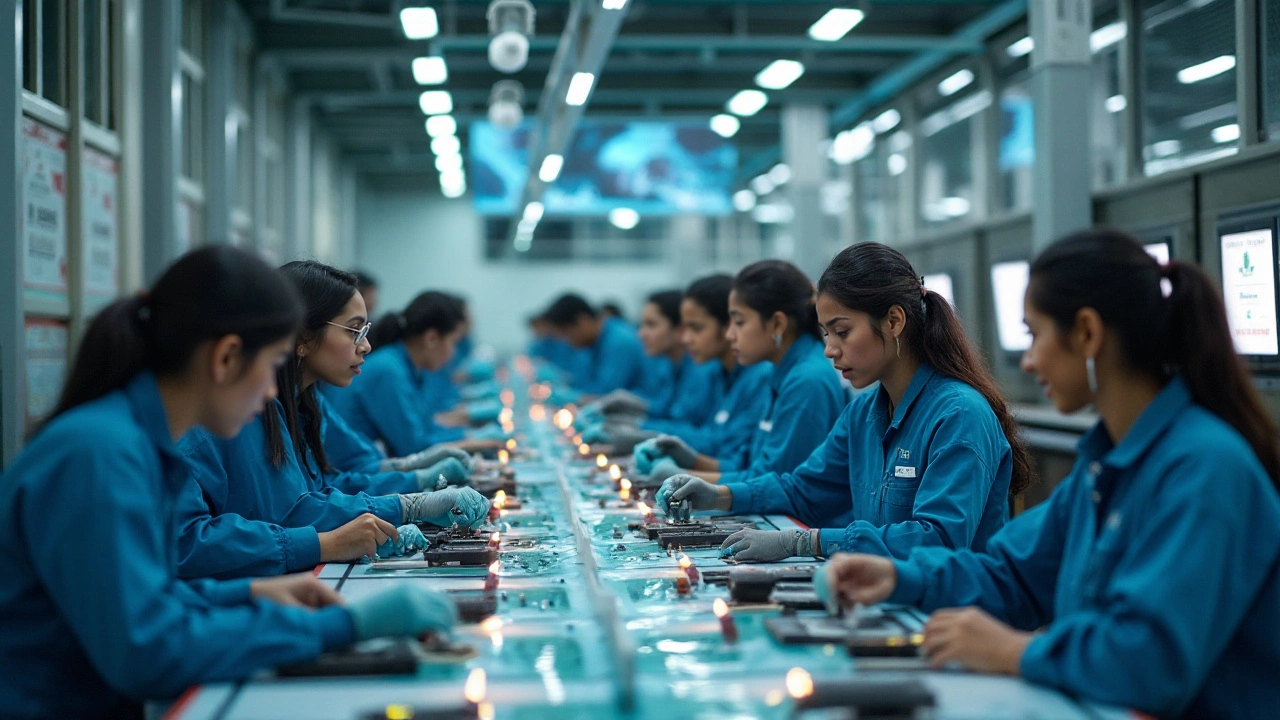
Challenges and Future Outlook
The manufacturing industry faces a myriad of challenges in its bid for sustained growth. One pertinent issue is the rapid technological advancements that outpace the workforce's ability to adapt. Automation and robotics have transformed factory floors, increasing efficiency but also threatening traditional job roles. This evolution necessitates robust training programs to upskill workers, ensuring they remain integral to the production process.
Environmental concerns also loom large over the sector. As manufacturing contributes significantly to global carbon emissions, there's mounting pressure from both the public and policymakers to adopt greener practices. This transition requires substantial investment, both in terms of financial resources and time, to overhaul outdated systems and embrace sustainable production measures. Despite these challenges, there are promising opportunities on the horizon that can steer the industry towards a prosperous future.
Global competition is another hurdle. Countries with lower labor costs can often produce goods more cheaply, drawing business away from nations with higher living standards. This places pressure on governments to implement effective government schemes designed to support domestic companies in improving their competitiveness on the international stage. Yet, through this adversity comes innovation. Countries that pivot towards high-tech manufacturing and the development of niche products will find themselves in a strong position to thrive.
"Manufacturing in the 21st century is not just about putting products together. It’s about thinking creatively and finding solutions to stay ahead." - Economist Richard Bhattacharya
The future outlook for economic development hinges on adaptability. As the world rebounds and adjusts from recent global disruptions, manufacturers have the opportunity to reinvent and solidify their roles as economic pillars. The integration of AI and IoT into production processes is paving the way for smarter operations. Evaluating data in real time to optimize production and reduce waste offers a fascinating glimpse into how technology can be married with physical labor to create efficiencies.
Moreover, shifting consumer preferences towards more personalized products mean flexible manufacturing systems are in demand. This trend encourages the development of innovative manufacturing techniques, such as 3D printing, which allows for rapid prototyping and customization at scale. As manufacturers embrace these practices, they will likely see growth in both domestic export growth and global markets. The key is to recognize and adapt to these changes to ensure sustainable progress in the ever-evolving industrial landscape.
